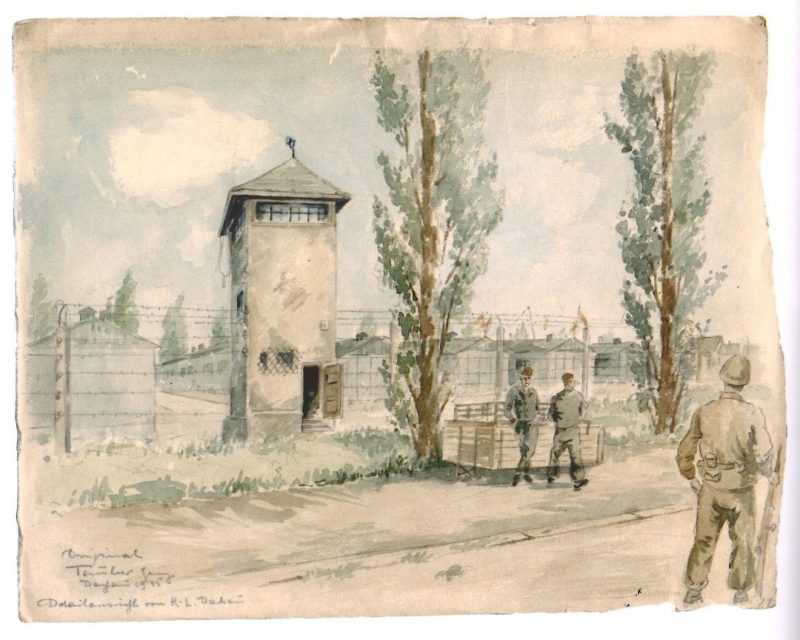Art as testimony
At the end of May 1938, Georg Tauber was handed a prison sentence for forging prescriptions and committing fraud. The police used his addiction and his several courses of psychiatric treatment as a pretext to record him as »asocial« in their files.
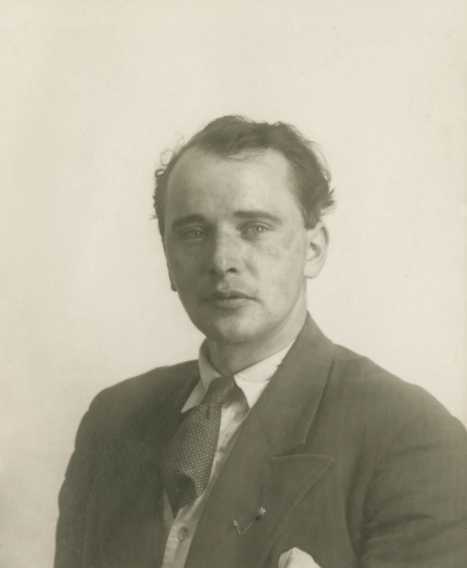
Source: Stadtarchiv Nürnberg C 21/VII Nr. 163
In January 1940 the Criminal Police sent Georg Tauber to Sachsenhausen concentration camp, and then three months later he was transferred to Dachau concentration camp. He was 39 at the time. In Dachau he managed to establish good contacts with fellow prisoners thanks to his artistic talent. He decorated greetings cards with ornamental designs and flowers at their request and he painted watercolours for a civilian worker.

Source: KZ-Gedenkstätte Dachau

Source: KZ-Gedenkstätte Dachau
He produced the vast majority of his watercolours and drawings after the liberation of the camp. The works depicting crimes are of particular significance. They testify to the crimes and show the perpetrators responsible. In criminal proceedings the prosecution even used some of his pictures as incriminating evidence against members of the SS who worked at Dachau. Georg Tauber’s drawings captured testimony for future generations.
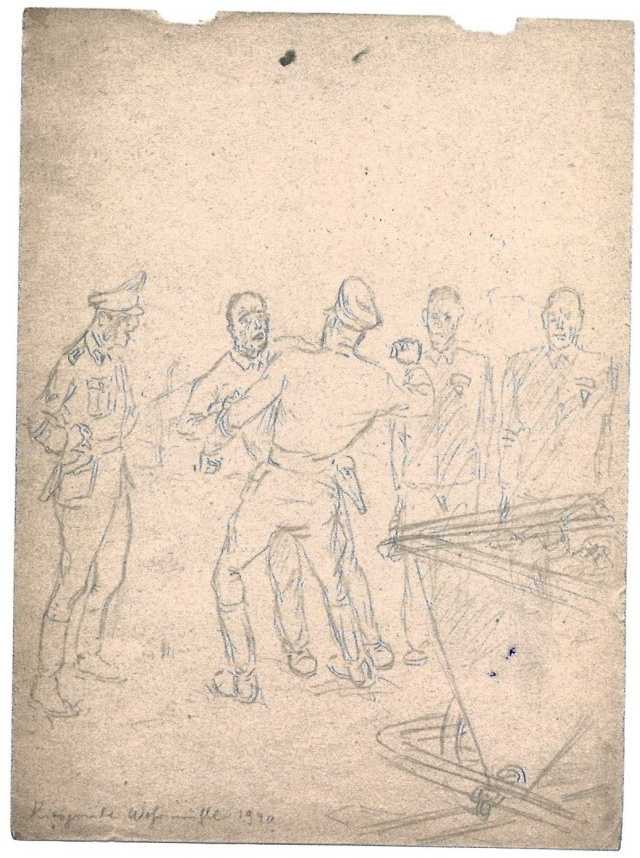
Source: Private collection
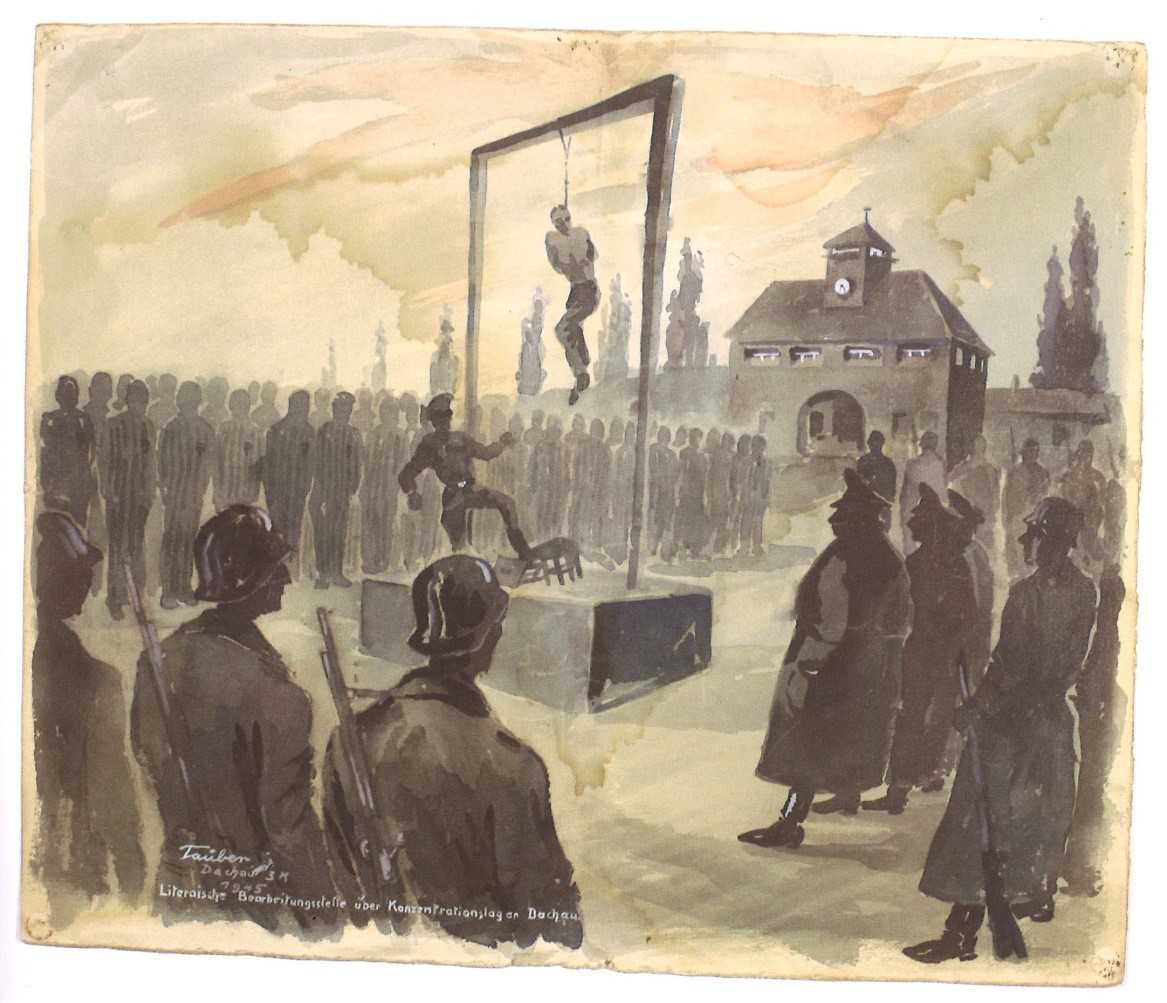
Source: Private collection

Source: Private collection
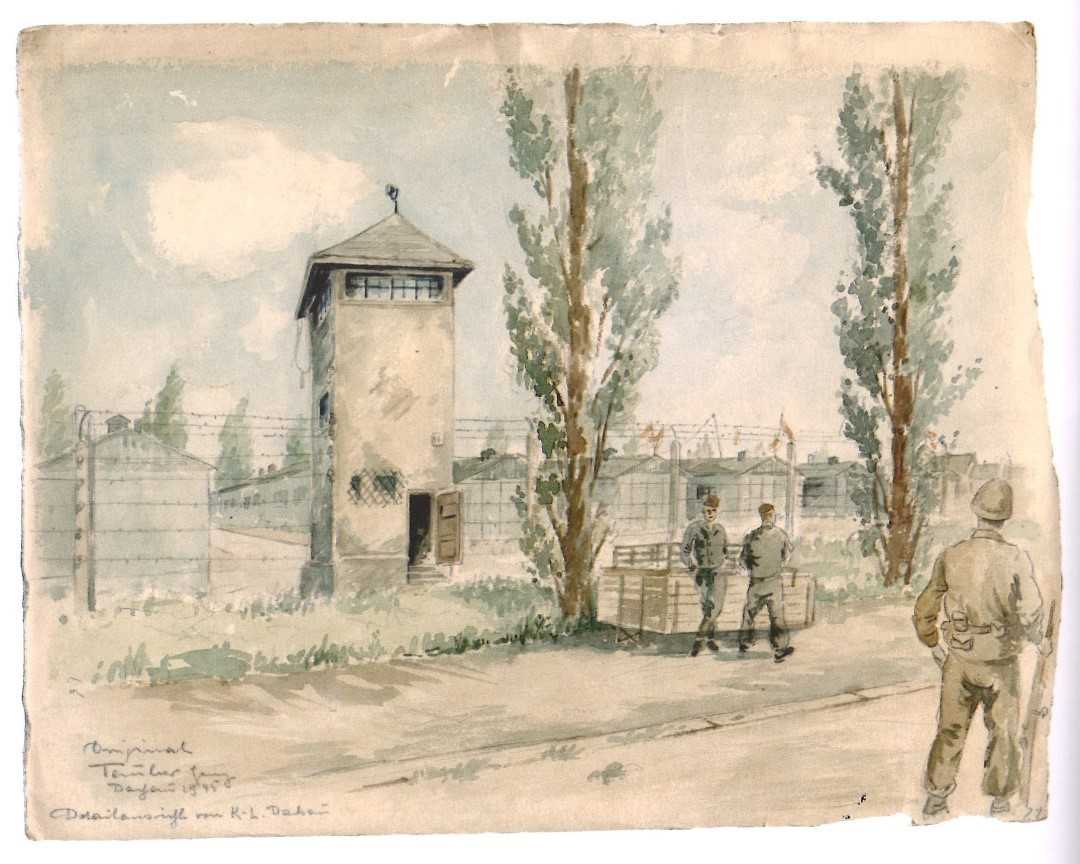
Source: Private collection
Directly after the liberation of the camp, Georg Tauber began to seek recognition for everyone who had been persecuted by the Nazis. He founded the working group »The Forgotten Ones«, which aimed to give a voice to people who had faced persecution as »career criminals« and »asocials«. However, the association made little impact and it was prohibited after just a few months. »Asocials« continued to be stigmatised after the war; the widespread opinion was that they only had themselves to blame for their misfortune. Georg Tauber was to learn that there was no solidarity among former concentration camp prisoners when it came to recognising who had been a victim of persecution under the Nazi regime.
Georg Tauber said that he wanted to publish his memoirs under the title »The Truth About Dachau«. However, his health prevented him from doing so. He died of the lung disease tuberculosis in October 1950. He was 49 years old.

Source: Private collection
Die SS (»Schutzstaffel«) unter der Leitung von Heinrich Himmler versteht sich als elitärer Wehrverband des nationalsozialistischen Staates. Mit der Übernahme und dem Umbau der Polizei durch Himmler wird die SS zum zentralen Terrorinstrument des Regimes. 1934 erhält sie erhält die Kontrolle über sämtliche Konzentrationslager. Das 1939 gebildete Reichssicherheitshauptamt, die Planungszentrale für die Verbrechen im deutsch besetzten Europa, ist ihr zugeordnet.
Abkürzung für Konzentrationslager
Bezeichnung für alle im Herrschaftsbereich der Nationalsozialisten errichteten Haftstätten für politische Gegner/-innen oder Menschen, die zu solchen erklärt wurden. Die Gefangenen sterben an schwerer körperlicher Zwangsarbeit, Unterernährung, Krankheiten, Folter sowie durch gezielte und willkürliche Morde. Die Lager stehen unter Kontrolle der SS (Schutzstaffel). Zwischen 1933 und 1945 waren insgesamt 2,5 bis 3,5 Millionen Menschen in Konzentrationslagern inhaftiert.
